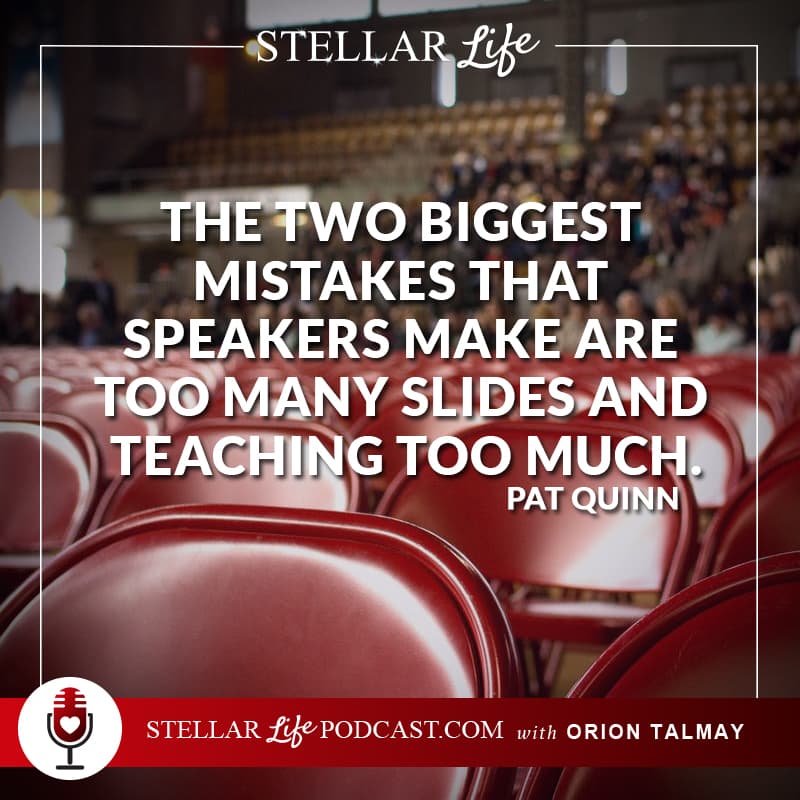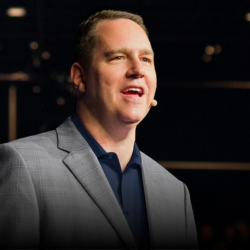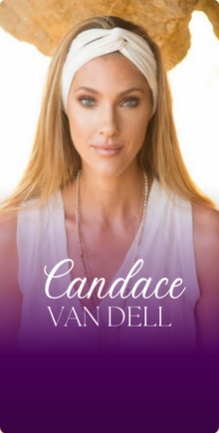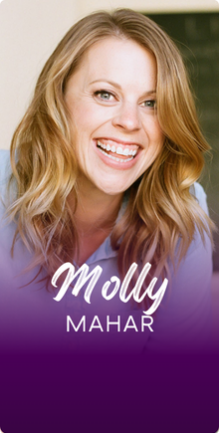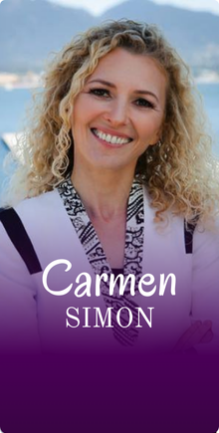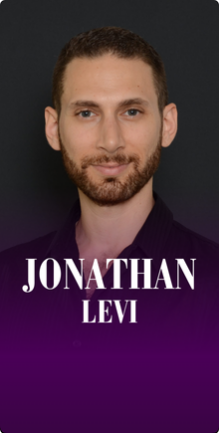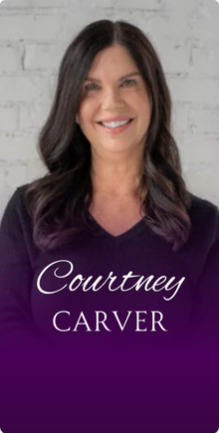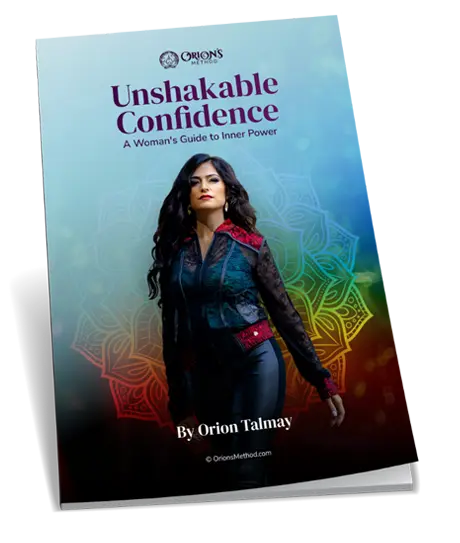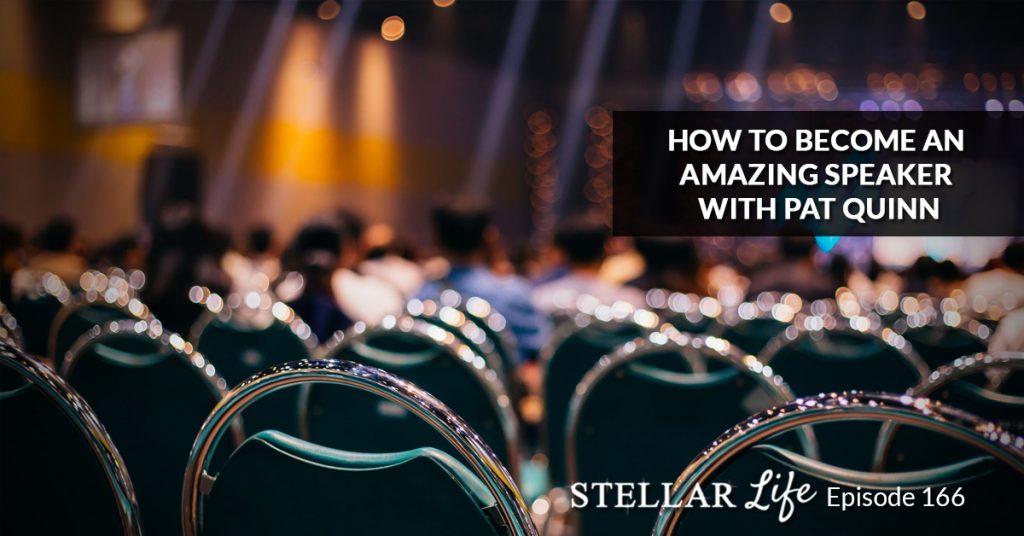
About Today’s Show
It’s lovely having you here.
It’s great to be here.
Thank you. I love your radio voice.
I think it’s natural. I didn’t do anything to acquire that.
It’s really lovely. Before we start, can you please share a little bit about yourself?
Sure. I’m a presentation coach. I help speakers, both professional speakers and others, who have a message to share and an audience to share it to. I spend most of my days working with people who are trying to get a message out to a specific audience. Some of them do it very effectively, some of them don’t do it very effectively, and I can help all of them.
The greatest secret in business is that when you help people, they want to do more business with you. Share on XI love it. When people come to you and they have an idea, like they want to share a personal message or story, do you find that they sometimes struggle with sharing it or thinking, “Maybe I’m not worthy.” or “This story is too difficult, but it can really help my presentation, but I’m afraid to share it.”
Absolutely. I think a lot of people get just hung up on their own issues and their own barriers. I actually didn’t get my start as a professional speaker. I got my start as a professional magician and I worked magic for 10 years straight. After that, I decided I needed to get a real job. I became a public school teacher and taught high school math for 12 years. During that time, I picked up an advanced degree in how adults learn. I bring two things to the table when I’m trying to help someone. First is a little bit of stagecraft from my years of doing magic. Second is a real focus on how the audience will hear your information; how the audience will learn your information and participate in the presentation itself. I’m hyper-focused on the audience. One of the first strategies I give almost on every speaker I work with is stop filming yourself. Instead, turn the camera around, turn your phone around and start filming the audience. You already know what you look like, but if you would just turn that phone around and film the audience, you will learn in about two minutes what the most exciting and most boring parts of your presentation are.
You’ll see moments when the audience is completely hypnotized by what you’re saying. You’ll see moments where the audience is leaning back on their chairs with their arms folded across their chest which you may think as them getting comfortable, but we all know it as them disengaging from the presentation. I just think that you will learn so much more by watching the audience and paying attention to the audience. My first piece of advice as we started thinking about this is, stop paying so much attention to yourself and start paying attention to the audience. Then, you’ll get out of your head and your hang-ups, and your lack of confidence, and you’ll get into serving the audience and helping the audience solve a real problem.
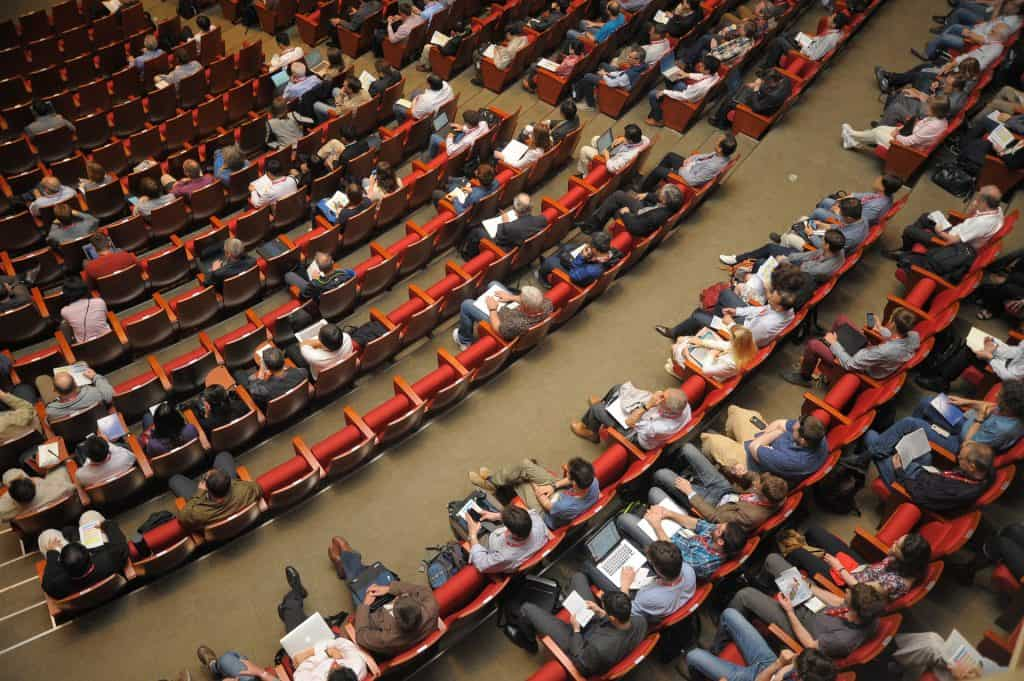
I love what you said because I guess about six years ago or five years ago, I was really struggling. There was something in me that wanted to be a presenter. I wanted to speak on stage, but I have a lot of insecurities. English is my second language. That inner question of, “Who am I to be on stage in front of thousands of people? Why would they listen to me? I’m not that interesting.” But mostly, my message is linked to my core story which is overcoming an abusive relationship, finding my strength, finding my superpowers, connecting to my feminine self, and attracting the love of my life. The whole presentation is about empowerment, finding your strength, connecting to a bigger vision, and a bigger version of yourself. But I was holding myself back.
Then, I met a friend of mine, Anil Gupta, who is a very successful coach. One of his friends is Richard Branson. He hangs out with these type of people. We met in Florida and we had a little conversation. He looked at me in the eye and I guess I was in a receptive mode because it really hit me hard. I really received what he had to share with me. He told me, “Orion if you’re not going to share what you know with the world, somebody’s going to die.” Boom. I was like, “Oh my god.” All of a sudden, it was not about me. It is always about you in some way, shape, or form. We all want to be successful celebrities and be loved. Being loved is basically what we all want, but the main thing is that it’s not about you; it is about your audience, it is about your vision and your mission, and the way you are going to change the world with your speaking.
I work with a lot of people who are in your situation who have these doubts of “who am I to go up on stage? Who am I to be an expert?” One of the things we really try to get people focused on is clarity on who their ideal audience is and the problem that they will solve for them. When you have real clarity on the problem that you’re solving for your audience, that takes such a weight off your shoulders because you no longer have to be the smartest person in the room. You no longer have to be the person who knows everything and has the answers to every question. You don’t have to be everything to the people. All you have to do is solve one problem for one group of people in the audience and that’s who you’re there to speak to today. The other thing that I think I always have found beneficial is remembering that nobody knows my story as well as I do. I might not be the biggest expert in the world on this topic, or that topic, or even the topic that I make a living on, but I’m an expert on my story. Nobody knows my story better than I do. It’s my job to tell it, not someone else’s job to tell it.
I think if you go on stage with those two things in mind- that you own your story and it’s your job to tell it, not someone else’s- that’s all you have to be an expert on. It’s going to lift this weight off your shoulder and take all this pressure off that you have to be the biggest expert in all topics, solve all problems, and be the smartest person in the room. All that burden is gone. Just tell your story and solve this one problem for the audience and it’s going to be a whole lot easier.
I love it. We got over our insecurities and we decided that “woah, we’re going to go for it. We’re going to help the world with our story or with a message, now what?”
Now, it’s time to put together an amazing presentation. We believe an amazing presentation is more than just your story. It starts with your story. We always want our presentations to start with an opening heart story. In that opening, five minutes when you’re in front of an audience, there are three really important things that you need to do. The audience is going to make a decision within the first five minutes of hearing any speakers speak. We all do it whether consciously or subconsciously. We make a decision about whether we’re going to be present and not engaged or whether we’re going to be fully engaged with the speaker. If we’re in-person with them – in the room, in an auditorium, or in a theater, or somewhere where we’re hearing the speaker live, even if it’s in somebody’s living room – we won’t be rude and walk out but we’ll just sit there and not really engage. We’ll let our mind do other things. We’ll think about our shopping list and what we’re going to do next. Online of course, if we’re watching a webinar or listening to a podcast and we hear a speaker, and we decide we’re not going to engage, we’ll just click off and go do something else. Or in the first five minutes, we might decide to be fully engaged with the speaker. That decision is based on whether or not the speaker does three things in the first five minutes. The speaker has to be extraordinary, and show their why.
Ordinary and extraordinary at the same time?
Yeah, that’s the challenge. Ordinary means, “I’m like you. I’ve walked in your shoes. I’ve struggled with what you’ve struggled with and worried about what you’re worried about.” If you don’t connect with the audience that you understand their problem, this isn’t going to work. The extraordinary means, “I’ve kind of figured this out. I have some solutions. I’ve worked through this. I’m an expert in one area but not all areas.” I think we all have heard speakers who are too extraordinary. They walk up on stage and their lives are perfect. They’re like, “I have a bajillion dollar business. Everything I touch turns to gold. My mailing list is 500 million people big. Every time I launch a new product, I sell this much of it.”
The most valuable stories are the ones that your audience can relate to the most. Share on XJust hearing that makes my skin crawl.
I know, but we hear speakers like this all the time who are like, “I’ve got it all figured out. Everything works perfectly for me.” Whether they’re speaking on marriage, business, or making money – whatever it is, it’s like they have it all figured out. They’ve never struggled a day in their lives. If we were just like them, everything would be perfect. At some point, you’re sitting there thinking, “Maybe you’re not the right person to help me because I’m struggling here. I don’t have a big business. I’m struggling.” We also heard speakers who are too ordinary. They get up on stage and they say, “Hey, I’m just like you. I struggle with what you struggle with. I worry about what you worry about. My business is actually going bankrupt next week.” At some point, you’re sitting there and thinking, “Why am I listening to you? Why am I in the audience and you’re on stage? Why did I pay to come here and you’re being paid to be here?” It’s actually the speaker who does both. Who is ordinary and says, “Look, I’ve struggled with what you’ve struggled with. I’ve worried about what you’re worried about and I figured something out. Today, I’m going to share with you what I have figured out.”
It’s the speaker who can walk the tightrope and be both ordinary and extraordinary that actually gets the audience to fully engage. The third thing you need to do is to show your why. You have to show why this is important to you. Why this is bigger than you getting paid to be here or you becoming popular. You have to go deep and say, “This is my story. This is why I’m passionate about this. This is why this is not about business, not about fame, not about popularity, or anything like that. I have a why that is deep and it is inside me. Here’s what it is.” If you can do those three things, if you can be ordinary, be extraordinary, and show your why – the audience is going to fully engage with you in your presentation. If you missed any of those three, there’s a very good chance that part of the audience is going to lean back in their chairs, click on to something else, and maybe be present but not fully engaged with you.
In order to be ordinary, extraordinary, and share my why, do I open with a story? What’s a good opening?
I believe the fastest and easiest way to do those three things in five minutes is through episodic storytelling. Episodic storytelling is not to tell your story like a third party biographer would tell it, or to tell your story like you’re reading a resume of the different stops along your journey, but instead, take us into a room. Take us into a room where we can see what you see, hear what you hear, feel what you feel. If you take us into that room, we will be forever emotionally bound to you.
One of the speakers I coach is LaVonna Roth. LaVonna used to start her presentation by telling us that she grew up very poor, they didn’t have a lot of money growing up. Well, when she came to our two-day workshop in Milwaukee where we help speakers craft their story or write alongside with them, we changed her opening story. Now, she starts by taking us into a room. When LaVonna was 14 years old, her family got evicted from their apartment. A friend said, “You can come live with us.” When they went over to the friend’s house the friend said, “Well, we don’t actually have an extra bedroom for you, but we do have an abandoned chicken coop attached to our garage. You’re welcome to stay there.” As a 14-year-old girl, LaVonna walks the audience into the chicken coop. You can see what she sees. You can hear what she hears. You can smell what she smells. I’ve got to tell you, I’ve seen her probably do this in front of an audience, a live audience, probably six or eight times and at that moment in her presentation, you could hear a pin drop. At that moment, that audience will go anywhere with her. Certainly, they’ll sit and go with her on this 45-minute rollercoaster ride she’s going to take them on, but they also want to engage with her after the fact. They’ll buy anything she’s selling, sign up for any program she has, follow her on social media. They will join her in life because she took them into a room.
You can do this. Everybody listening to this can do this. You can take us into a room where we can experience a moment with you. This is the art of episodic storytelling and it’s so much better than reading your resume to us. It’s so much better than starting your presentation by saying, “Hey, it’s really great to be here. This is what I’ve been doing for the last 20 years. For this year to this year, I was doing this, and then I was doing this.” It’s so much better than that because it gets the audience emotionally invested from the very first moment of your presentation.
That’s a great tip. You write your story and you bring it to life. You make it sensual of the senses. We can hear what you’re saying. We can visualize what you’re saying. We can almost smell the chicken coop. You basically draw the audience into your world and as you are developing your storytelling skills, it’s almost like you’re drawing them into your movie, and then they’re a part of your movie.
Absolutely. I want to emphasize, I’ve been fortunate enough over the last 10 years to work with some of the greatest speakers in the world – New York Times bestselling authors, six different Olympians, a number of pastors that you see on television every Sunday – but most of the people that I work with are not professional speakers. Most of the people that I work with are either business owners who want to grow their business and attract clients through speaking, or they’re people who just have a story to tell and have an audience to tell it to. I think one of the most important things to remember about these opening and closing stories that we teach people how to do is that it doesn’t have to be an extraordinary once in a lifetime story. I worked with people who’ve climbed Mount Everest and I’ve worked with people who’ve flown in space, and they have stories that are absolutely extraordinary, but if you’ve done that and you tell that story, how many other people in the audience have done that? The answer is zero, usually. Dean Jacobs has paddled down the Amazon River in a canoe and wrestled with alligators. When he tells that story, no one else in the room has done that.

On the other hand, I work with other speakers who tell the most ordinary stories. Stories of growing up in modest conditions and broken families. They haven’t been cured of the world’s rarest disease and they haven’t walked in space. But when they speak, there are hundreds of people in the audience who can relate to those stories because they’ve experienced them too. What if we didn’t evaluate our opening story in our presentations by how many people come up to us afterward and say, “That was an amazing story. I’ve never heard anything like that.” What if instead, we evaluated the opening story of our presentation by how many people come up to us afterward and say, “That same thing happened to me. That exact same thing happened to me. My story is your story,” because that’s actually a more valuable story. The most valuable stories are stories that other people in the audience can say, “That same thing happened to me. I can relate to that. I want to talk to you about that because the same thing happened to me.”
I tell some wild funny stories in my presentations, but the story that I tell, the story that I get the most feedback on, the story the people email me about, hit me up on Facebook, come and talk to me afterward, is a story about macaroni and cheese. It’s a story about macaroni and cheese because when I tell that story, people want to come up afterward and tell me about their macaroni and cheese. Whether they have a recipe, they have a childhood memory, whether they have kids that are eating it now, or they ate it when they were kids. Everybody wants to talk about macaroni and cheese. It’s a better story than some of my oh-stories-that-are-once-in-a-lifetime. It’s a better story than a story of flying in the space or floating down the Amazon River because more people can relate to it. I just want to encourage you and everybody listening to embrace your ordinariness. Embrace the fact that you’re stories aren’t once in a lifetime, or once in the universe, and that’s good. The more people who come up to you afterward and say, “That same thing happened to me,” the better the story is because you’re getting into people’s lives and you’re relating to the audience that you’re speaking to.
As much as my personal story is extraordinary, it is also ordinary because one in three women have been either sexually abused or domestically abused. A lot of people in the audience can relate. According to the #MeToo movement, 80% of women have experienced something like that, some kind of sexual harassment.
A great way for you to evaluate your presentations after you speak is how many people come up to you afterward and say, “I love that story. That same thing happened to me. That same thing is happening to me.” That’s a great way for you to evaluate how you’re doing with that audience.
Last time, I spoke to my largest audience which was 500 people. It was awesome. It felt so good. I was surprised at the number of men who approached me. I was also overwhelmed with how strangers opened up to me on their most intimate stories. It was extraordinary. It was moving and it was beautiful.
The two biggest mistakes that speakers make are too many slides and teaching too much. Share on XIt was a good moment for me. Back to the presentation. I love what you said about you don’t have to be the greatest. You don’t have to be the best story. You want to have a story that has a message and that people can relate to. Your macaroni and cheese story was the one that people loved the most because when people hear you and they hear whatever you have to say, they don’t think about you, they reflect on their own lives. You struck a chord in the hearts of the people and that’s beautiful. We crafted our story, and our story is probably our opening, now what? We have to write an outline. We look at the computer, we stare at a blank page and we’re like, “Now what?”
The last thing you want to do in your opening sequence is to road map the rest of the presentation. Road mapping is basically telling people what you’re going to talk to them about today. The best presentations in the world are broken up into three sections.
Never tell them what we’re going to say and what we’re going to do?
We’re going to say, “Today, I’m going to talk to you about this, this, and this.” It’s the simplest thing in the world to do and there are two reasons why you do it. First, it makes your presentation seem 20% shorter. Research shows that presentations that are road mapped in the beginning and benchmarked throughout seem shorter than presentations where the audience is always wondering, “Where are we going with this? Are we at the beginning, the middle, or the end?” We want you at the end of your opening sequence here to say, “Today, I’m going to talk to you about this, this, and this.” Here’s a pro ninja tip, when you do your road mapping, include a time element. If you’re there to speak for 20 minutes and you’re at this part of your presentation say, “Well, in the next 15 minutes, I’m going to teach you about this, this, and this.” If you have an hour to speak and you took 10 minutes on your opening story say, “In the next 50 minutes, I’m going to teach you about this, this, and this.”
The reason you want to road map your presentation and include a time element is that, if you don’t do this, about three-quarters of the way through your presentation, somebody’s going to have a thought popped into their head. They’re going to be sitting there and the thought’s going to be, “Hey, I wonder if this speaker knows how long they’re supposed to speak for because there are only about 10 minutes left and they’re still going strong,” and they’ll look at their phone. Now, all audience behavior is contagious. When one person claps, everybody claps. When one person laughs, everybody laughs. But when one person looks at their phone, everybody looks at their phone. When one person looks around for a clock, everybody looks around for a clock. We call this interference. Anything that comes between you and the audience receiving your message. You can avoid all of this interference simply by including a time element in the road mapping portion of your presentation. As you go through your presentation, be sure to benchmark. That means to tell them where they are.
In your first section, you say, “Hey, this is the first thing I want to talk to you about.” When you finish that, you should say, “Well, that’s about all I have to say about that. Now, let’s talk about the second thing that I’m going to talk to you about today.” When you finish that, you should move on to your third part and say, “Well, that’s about all I have to say about that. Now, let’s talk about the third and final thing that I’m going to talk to you about today,” so that every moment of your presentation, the audience knows if they’re at the beginning, the middle, or the end of the presentation. They never have to wonder or use up any brain power or processing power to wonder about that and you’ll have the audience leaning in, learning more, remembering more, and paying attention more to your presentation.
In your structure, do you do a numerical structure? “These are the three keys, the five keys to whatever.”
You can. Some presentations layout that way. There’s not one right way to do this. There’s more than one. Some presentations are, “The three most important things to know about this.” Some presentations are a beginning, middle, end of a story. I mean, there are lots of ways to do it. We like the middle cut up into three sections because three and four sections are what the human mind can remember. That’s why phone numbers are broken up into three digits and four digits because that’s what we can remember. We like presentations that are built into that. Every presentation is different. Every presentation has a different length of time.
Every body of material has a different size body of material. I wouldn’t say there’s one way to do it. I would just say, “In the next 30 minutes, I’m going to teach you about this, this, and this.” As you think about that middle part of your presentation, the middle part of your presentation is your content. That’s what you’re actually going to teach the audience. There are some types of presentations that don’t get put on big stages, that don’t get booked on stages. If they do get on a stage and they do this type of presentation, they don’t get asked back, or they don’t get on bigger stages.
The first type of presentation that people don’t put on big stages are presentations that only talk about the problem. If you’re halfway through your presentation and you’re still describing the problem, we have a problem. People want presentations that solve problems, not point out problems. What we’re looking for are real solutions in this middle content part of your presentation. The reason people came to hear the presentation is because they had the problem. If you spend the whole time talking about the problem they’re like, “I know there’s a problem, that’s why I came here today. I thought you were going to solve it for me, but apparently, you’re just pointing out the same problem I already knew that I had.” We want you to have real solutions.
The second type of presentation that doesn’t get booked very often is a presentation that is all theory. People don’t want just how it should work, or information, or facts. They want things that they can do. If you’re talking to them about their business, don’t just give them facts, give them things they can do to grow their business. If you’re talking to them about their relationship, don’t just give them statistics about relationships, give them specific things they can do to improve their relationships. If you’re talking to them about their health, don’t just talk about that health is a problem, give them solutions that they can do to improve their health. People want presentations that solve problems.
In this part of your presentation, we want you to give real solutions to a problem that the audience has. If you can do that, if you can share real solutions, people are going to love your presentation and you’re going to get asked back again and again. I’ll tell you this, your stages, whether they’re online or offline, your stages are going to get bigger and bigger because the people that they’re putting on the biggest stages in the world are people who solve problems.
I interview a lot of people here on the show. I noticed that some people are very generous with their content and some people talk more about the why and they hold back. I always resonate to people like you that are super generous with their content because then you come from a place of abundance. You have so much knowledge in you that I’m sure that a two-day workshop will not be enough to cover 10% of it. When people are stingy with their content, it’s not interesting. People are like, “Why am I listening to this? This is not valuable. There’s too much fluff here.” People can detect it. It is a fast world. People don’t have time to waste. If they give you their time and their energy, you better be worth it.
It’s a changing world too. What you’re describing is a technique called ‘bait and switch’ or ‘the tease’. Ten years ago, it might have worked. When you could do a webinar or go on to a podcast and say, “Hey, I’ve got a whole bunch of really good solutions. All you have to do is pay me and I’ll give you those really good solutions.” You’d tease, “I can get you all these results. All you have to do is pay me and I’ll give you all these good results.” Ten years ago that might have worked when we were a little bit less internet savvy and the information wasn’t as available on the internet as it is now.
Now, I think people are looking, as you said, for real content and real solutions. They can smell out or find the ‘bait and switch’, and the ‘teasers’ as we call them. We find them very quickly and people just dismiss them. The greatest secret in business in the world is that if you actually help people, people will want to do more business with you. If you actually solve problems for people, people will want you to solve more problems for them. To all of the speakers that we work with, we give one single piece of advice: give the audience your best stuff. Give it early. Give it often. Give it generously and give it for free. Just help them, solve their problem. What we find is when you do that, that is so attractive that people come back again and again and say, “I loved that. I’ll pay you to do it again. I loved that. I’ll pay you to solve other problems.”
If business growth is the reason you’re speaking, we have the same approach. Give away your best stuff and people will come back and want to buy it again and again. But start by giving away great information and solving real problems. I’m glad that you have recognized even in your interviews that some people are still using the ‘bait and switch’ and the ‘tease’ and the audiences are running away. The audiences are saying, “I don’t need that. There are people out there who will help me, generously help me and I’m going to do business with them.”
Yes. It’s like Tony Robbins said, “The secret to living is giving.” It’s also the secret to business. It’s the secret to life.
It’s the secret to good speaking, that’s for sure. Audiences love presentations that are loaded with real solutions that they can do the very next day.
Wonderful. I love our conversation, it’s so great. You want to write your content. Where do you begin? How do you get your ideas on paper? How do you structure your presentation?
There are two ways that we recommend that people think about the problem-solving part of their presentation – the middle content section. One way is to think about your journey and kind of break it down into the steps that you took. If you think about your journey of being in a relationship, then getting out of a relationship, and helping other people with their relationships – that could be your journey.
What were the steps that you took? First was probably a stage where you are in it. There might have been a denial stage, then a recognition stage, then an action stage, or something like that. Think about your journey because, if you’re speaking to an audience of people just like you, your journey is often the audience’s journey. Sometimes, they don’t match up perfectly like that, or you might be speaking on a topic that doesn’t perfectly match your journey. If that’s the case, then we have you picture one ideal audience member and say, “Okay, if one ideal audience member was just sitting across a Starbucks table from you, how would you help them?”
When I’m thinking about my presentation, I’m thinking, “Okay, if one speaker came and sat at Starbucks with me and sat down and said, well Pat, help me. I want to give a presentation.” How would I help them? The first thing I would do is ask them these questions, so that’s the first part of my presentation. The second thing I would do is say, “Well, how do you want to start?” That’s the second part of my presentation. The third thing I would do is this, we need to think your journey or the ideal customer journey, or the ideal audience member journey – if it’s not a business, if it’s just a presentation about your story or helping somebody change something. We think those two journeys actually map out great presentations. We want you to get it down to three or four sections. What we do is have you continually have shorter amounts of time to tell me about it.
You can't teach more than three things in your keynote. Your audience won't remember them. Share on XI was in Phoenix this past week and helping somebody with their presentation which was about social security. Of all things, helping people maximize their social security benefits. I said, “Well, we’d like it to be in three sections.” They said, “I couldn’t get it to three sections. There’s like 15 things that I talk about. It’s going to be 15 sections.” I said, “Okay, we can’t have 15 sections,” but I said, “In 60 seconds, tell me about the 15 sections.” They said, “Well, the first five are like what social security is, the second five is how you maximize your results, and then the last five are about this.” I’m like, “Okay, you did it. When I made you do not have five minutes to talk about it and I said instead tell it to me in 60 seconds, you immediately began summarizing it into these big chunks. That’s how you section off your presentation. You just give yourself less and less time to talk about it and tell me what those lumps of information would be when you only have 60 seconds to talk about it. Lo and behold, those are the sections of your presentation.” We find them by either looking at your journey, or the ideal customer journey order, or the audience member journey, and then we turn them into sections by giving you less and less time to talk about them, so that you have to kind of lump them and summarize them together.
Nice. Pat, I have a Starbucks down the street, we can totally meet there. Coffee on me.
That’s absolutely great. One of the things you want to do in this middle section of your presentation if you love to engage with your audience, two times during those middle section of your presentation, you should refer back to yourself by your first name in conversation. I often have people come up to me and say, “Pat, I can’t have three sections in my presentation because there are seven steps in my process. What do I do about that?” I always say, “Well, you should either talk about the three most important ones or the three that come first.” There, I just did the technique; I referred back to myself in conversation. I was taking the garbage cans down to the end of the driveway this morning and the neighbor was taking his garbage cans down too and he yelled across the yard, “Hey Pat, is today recycling day?” I said, “No, that’s next week.” There, I just did it again. I referred back to myself in conversation. Why do you do that? You do that because the audience isn’t going to do anything they haven’t rehearsed in their head. The moment you do that, the audience starts rehearsing having a conversation with you in their head. What you want the audience to do is to talk to you after the presentation, to call you, to email you, to engage with you on social media, whatever it is.
I guess people come to you and the first thing they say is, “Hey Pat.”
Exactly. They begin rehearsing that conversation. The first barrier to that conversation is what would I ever call him? The answer is, I’m going to teach you that. I’m going to train you. I tell you, I used to walk off stage and there would be five people waiting to talk to me. Now, I walk off stage and there are 50 people waiting to talk to me. It’s not that the audiences are bigger, it’s that they’ve been rehearsing in their heads for the last 20 minutes these conversations, and that’s what you want. Whether you’re trying to change lives, whether you’re on a mission, whether you’re trying to grow business, whether you’re trying to grow a social media following, it is these engagements after the presentation that actually grow your mission and grow your impact in the world, and this is how you do it. You do it by referring to yourself by your first name during the conversation, during the content portion of the presentation, then the audience starts rehearsing that, and then you’ve got them. You’ve got them fully engaged.
Hey Pat, that was a ninja.
I appreciate you calling me Pat. I trained you to do that a few minutes ago and now you’re doing it already.
I’m going to say, “Hey Pat,” for the rest of the interview.
It’s funny, people come up to me afterward and some of them try to avoid it. They’re like, “Hey, Mr. Quinn.”
Mr. Quinn is so proper.
But inside, you want to call me Pat because you’re practicing calling me that.
Wonderful. Do you recommend writing the content yourself or having somebody else write it for you?
We want people to be authentic and transparent with their words. When I tell people that I’m a presentation coach, one of their biggest fears is that I’m going to try to change their style, and I would never try to do that. I work with speakers who move around a lot on stage and I work with speakers who stand perfectly still. There’s more than one right way to do this.
That’s beautiful. That’s great because so many people tell you what’s the right way to be. It’s just such a good metaphor for life.
If anybody tells you there’s a formula, run. Runaway from them. There’s not a V formation that you’re supposed to move in. You’re not supposed to do things with just one way. There’s more than one right way to do this and we don’t need any more proof of that. Look at the greatest speakers in the world. There’s such a wide variety of how fast they talk, how loud they talk, how much they move and because of that, we really don’t want somebody else writing the words for you. People ask me a lot of times, “Do you work with actors and actresses?” My answer is always, “No. Actors and actresses are actually doing the exact opposite of what I do.” Actors and actresses are pretending to be someone else when they’re on stage. I want you to do just the opposite. I want you to be fully and authentically yourself. That’s what people are drawn to.
We look for ‘palms up’ presenters we call them. They have their hands kind of up and they say, “This is who I am. It’s not perfect. It’s not pretty but it is who I am, and I’m here to help you today.” We think people are just drawn to that. And because of that, we want you to say it in your own words. Of course, the greatest speakers of the world have coaches and that’s because it helps them remove the interference between their message and the audience. I can help speakers structure a great presentation that moves people. I can help the speakers remove interference between them and the audience. I can help you tell your story in a way that is compelling, and causes the audience to grow, and change, and remember. But in the end, it’s your story, and it’s your message, and it needs to come out. Because of that, we’re going to have you write your own words. We’re going to work with those words to make them as effective as possible.
Hey Pat, it sounds like you’re a true magician.
It sometimes seems like math. Again, the thing that I like to stress is you don’t need to be an extraordinary speaker to make this work. I work with really talented people, but I also work with an incredible number of speakers who don’t consider themselves professional speakers, don’t even consider themselves good speakers. They’d say they’re introverts. They’d say they’re shy. They’d say they’re scared to death the first time they went on stage, but they give very effective presentations because they have a story to tell, they have their presentation structured the right way, and they’ve told it enough times that they’re getting more and more confident telling it. You don’t have to have a one in a million story to do this well. You don’t have to have a once in a lifetime talent for public speaking to do this well. Most of the people I work with are you would call quite ordinary in their speaking talents, but we’ve structured the presentation in a way that causes the audience to want to engage with them in their ordinariness, in their connectedness, in their authenticity, and their transparency. There’s a little magic involved, but I never want anybody listening to this to think, “Oh well, you have to be this world-class talent like Tony Robbins or an extremely gifted speaker who came out of Hollywood or Broadway.” That’s definitely not the case.

But people have to remember that Tony Robbins practiced his craft so many times. When he talks about his earliest speaking days, he would talk in front of any audience. He would talk in a bar, in front of some drunk people. He would do it over and over again. Nobody starts perfectly. It’s like a baby. A baby doesn’t start running on the first day, it takes time. But then you just train yourself to be a super athlete. You don’t want to compare yourself to anybody else because what people are looking for is not you imitating other people’s greatness, they’re looking for your greatness. They’re looking for an authentic connection to the person that you are. The more you are yourself, and you’re open, and you’re vulnerable, people will relate to you and follow you.
Yes. We have a word for this, we call it ‘low stakes practice before high stakes opportunities’. What that means is, during your lifetime, you will probably get some high stakes opportunities to share your story. Whether that’s on a stage or one-on-one in front of another person who really needs you on that particular day. What we want in those high stakes opportunities is that for not to be the first time that you’ve told that story.
This past weekend, I was in Phoenix and I had the opportunity to speak in front of 700 of the most successful financial advisers in the country. Peyton Manning spoke right before me and the Broadway and television star Wayne Brady spoke right after me. I was the ‘not famous’ guy in the middle. This was a huge opportunity in front of 700 ideal clients for me. I got to tell you, that presentation that I gave in this high stakes setting was not the first time I gave that presentation. I’ve been gathering neighbors and friends in my living room, practicing this presentation. I gathered all my pets into one room and gave a presentation for cats and dogs.
What pets do you have?
I have two dogs, a rabbit, two horses, and a goldfish.
Besides coffee, I also want to visit you. I love horses.
We call that ‘low stakes practice before high stakes opportunities’ which means you’re going to get high stakes opportunities. They may not be in front of audiences of 500 people or even 5 people, but there’s going to be an opportunity, a high stakes opportunity to tell your story in front of someone. Someone who needs you on that day to be your very best and to tell your story in the most compelling way possible. I just hope it’s not the first time you’re telling your story. I hope that you’ve had some low stakes opportunities to practice it. Whether that’s in a bar full of drunk people as you say Tony Robbins did, or in front of the neighborhood pets, or in front of a good friend, or in front of somebody who would never buy anything or doesn’t have the problem you’re trying to solve who can just hear you and let you practice, so that when you do get the high stakes opportunity, whether that’s in front of one person or a thousand people, that you’ve told the story before, and you tell it the very best that you possibly can.
Same goes to TV appearances. You never want to start reaching out to the larger stations because they don’t know you from Adam, but the main reason is that it’s such a high stakes situation to be on TV. The pressure of presenting yourself in three to five minutes, if you’re not used to it, used to the lights, and to be on cue. You want to start small. You want to start with some TV stations that nobody even heard about, and then slowly but surely, you gain your own confidence in your practice, so when the big opportunity arises, you are there and you are ready. You are ready. You’re not just starting, you’re not shaking, and you’re not messing up on the live stream in front of millions.
Low stakes practice before high stakes opportunities.
Yes, sir. I want to talk about slides. On a keynote, is it better to have slides? If so, what are some tips for slides?
There isn’t one right way to do this. We know from our study of the human brain that some people learn through audio and some people learn visually. We want you to have visual supplements to your presentation. Those could be slides or they could be a 3-dimensional object that you bring on stage with you as kind of a model of what you’re talking about. Either one works. What you need to recognize is that your slides are not your presentation, they supplement your presentation. They don’t replace your presentation. You would never pass up handouts that are just your slides, because then the audience is going to read those handouts, and there’s no reason to pay attention to your presentation. You should never read a slide to the audience, you’d speak what you want to speak, and let the visuals supplement that.
If your slides are just going to be a whole bunch of words that are already in your presentation, why don’t you just leave them at home and save them because you’re not supplementing your presentation? What we want on your slides are visuals that help a visual learner understand the words that you are saying, not a repeat of your words. A diagram, a map, a picture that helps supplement the words that you’re saying. In general, the two biggest mistakes that speakers make are too many slides and teaching too much. Most of the work that I do with professional speakers I work with is cutting content. Most people try to teach about twice as much as they should be in the amount of time that they have.
I’m so guilty of that. It’s so hard for me not to over-teach. What do I need to do to fix me?
Well, you think this is your one opportunity to speak to this audience. You think, “I got to squeal on everything that I know about this topic.
I’ll completely overwhelm you. It’s going to be like drinking from a fire hose and then people are like, “Ha? This is a lot. This is great, but this is a lot.”
Instead, I’d like you to think about this opportunity in front of this audience as the first engagement, the first date. If you don’t overwhelm them by fire hosing them, they’ll actually come back for a second date, they’ll actually come to listen again. On that first date, we don’t want to like tell them everything, we want to tell them some good stuff, our best stuff. Then we’ll share more with them as they come back again and again and again. This is good to grow this relationship, it’s good to grow your impact, it’s good to grow a business that way.
Before we move to the next mistake, I want to get more clarity on this one. How do you make it so it’s less? I know less is more. I know that a keynote presentation is about 6000 words. Do you look at it and you write 6000 words and then you cut some out of it? How do you go about it?
Well, everything in your presentation should have a purpose. In a 60-minute keynote presentation which we map out to 50 minutes, because you’re going to be introduced and you want to end early.
I was thinking 45-minute or 60-minute.
The 45-minute to 50-minute keynote presentation, which is what we map our presentations out to. You have 30 minutes of content: you have 5-10 minutes in the opening, 5-10 minutes in the closing, and so you have 30 minutes of content. You’re going to teach three things. The first question you should ask yourself when you go into any presentation is—I can only teach three things, you can’t teach more than three, I mean you can, but they won’t remember them—I can only teach three things.
They only retain 10% of what you say, anyways.
If you’re teaching too much, that’s true, but if I teach the right…
That’s what I heard, maybe it’s the wrong statistic.
That’s because there’s a lot of bad speakers out there. If you teach just three things…
No, with me, they retain 100%.
There you go, the average is 10%. What I would say is that, if I could only tell the audience three things and again, think about one person, if there is an ideal audience member sitting across the table from me at Starbucks, and I can only tell them three things to improve their lives in this area, what three things would I tell them? I can only tell them three. And there you have the three sections of your content. You’ve got 10 minutes to teach the first one, 10 minutes to teach the second one, and 10 minutes to teach the third one. Now you’ve got the right amount of content.
It’s not so much about the number of words. It’s about the number of different things you’re going to teach. We think three is the right amount. Within those three things, you can teach little things, I’m basically teaching three things today. I’m teaching how to start your presentation, how to have the middle of your presentation, how to have the end of your presentation. But in the end, people will remember three things. I think you should trim it down by thinking about the three sections of your content and thinking, “If I could only teach three things to this audience, what would be those three things?” And organize your whole content around that.
When you want your message to resonate, stop paying so much attention to yourself and start focusing on your audience. Share on XBecause of that, you’ll avoid the second mistake which is way too many slides. We think one slide every five to 10 minutes is about the right amount of slides. In that 45-minute keynote, you should have less than 10 slides. I watched a keynote over the weekend that had 120 slides in 30 minutes. The audience is just so busy you looking at what’s coming next on the screen that they never engaged with the speaker, they never get emotionally invested, they never have a chance to think about what the speaker is saying, they never have a chance to apply it to themselves. There’s so much interference when you’re changing slides every 60 seconds or even every 30 seconds in some really bad presentations. We want you changing slides once every 5-10 minutes. Well, there’s going to be times when you have a couple of lists or a couple of funny pictures you want to show in a row you go a little faster. In general, if you think of 45-50 minute keynote, 10 slides that’s what I get, I think that’s a really good opportunity to use visuals in the right way, not in the wrong way.
Hey Pat, do you remember your script by heart?
Well, there is a great question and one that I get asked a lot. There’s not one right way to do this. I work with speakers who type out their entire presentation in a Word document and when they stand up on stage, they repeat it word for word. I work with other speakers who go on stage with three bullet points on a post-it note. There isn’t one right way to do this. What I think you should do is memorize parts of your presentation for sure. I think for sure, you should memorize your opening line. The reason I want you to memorize the first words that are going to come out of your mouth when you get on stage is because that’s when you’re the most nervous. That’s what I see even some really good speakers that I coach get up there and kind of fumble around.
I coach one guy who speaks around the country on the topic of generosity. He gets up there and he’s got a great opening story, but he gets up there and he gets nervous and he’s like, “Hey, it’s really great to be here. Isn’t that weather great outside today? We came into town yesterday on an airplane and the airport was crowded.” I’m like, “You are wasting the most valuable real estate that you have. The audience is going to make a decision in the first five minutes and you have just wasted away the first two minutes talking about the weather and the airport. Get to the good stuff.” If he would memorize that opening line, go up there and not say anything except that opening line, you would always start strong, and confident, and leaning into the audience, and it would show. It would show how the audience responds and reacts.
I think you should memorize how you talk about yourself because how you talk about yourself can make a huge difference. Sometimes, we accidentally say things when we’re talking about ourselves that turn off portions of the audience. We get nervous, and we mention things, or we downplay things that we shouldn’t downplay. That we say, “I did this, but of course it wasn’t my fault. Oh this, and I should probably mention that and then I accidentally tell you who I voted for and half the audience is pissed at me now.” When you’re talking about yourself, you should have that practice so it comes out confident not bragging, but confident. Not apologetic, but unapologetically, “This is me with the good parts and the bad parts. This is me.” Think about that, don’t randomly say it differently every time. Don’t do it unrehearsed because you’ll make mistakes and you’ll step on it, and you’ll turn off parts of your audience every time you do that.
The other part I think you should memorize are your transitions. The reason I want you to memorize your transitions—how you get from your opening into your content, how do you get from your first content, into your second, your second into your third, and out of your content into your closing—is because that if you get lost in any part of your presentation, if you’re teaching your first piece of content and you’re like, “Wow, my brain just froze up and I have no idea what I’m saying.” All you have to do is limp along to your transition and then you’ll be on solid ground again. Basically, that’s like not knowing how to get, “I don’t know how to drive all the way from here to California. But I know how to drive from here to Nebraska, and then I know how to get from Nebraska to Colorado.” You can get lost in the middle of any section, but if you have your transitions memorized, and you know how you’re going to get from one part to the next part, you’ll never get too lost. Even if you do get lost, you’ll be able to find your way again.
Beautiful. Any ideas about audience engagement?
I don’t want you to make the mistakes that some people are recommending that you make which is to open your presentation by asking the audience a bunch of questions. “Hey, has anybody ever done this? Raise your hand. Has anybody ever done this? Has anybody ever done this?” Somebody is out there trying to get people to do this. It is a terrible way to start your presentation.
First, you never want to put the audience in a position where they don’t know what to do. When I walk on stage and say, “Hey, has anybody ever been afraid of being on stage before?” Are they supposed to raise their hand? Are they supposed to shout out? Are they supposed to turn to the person sitting next to them? Are they just supposed to think about it? When you put the audience in that position, you start with them in an uncomfortable position. Second, it’s a terrible way to start your presentation because the first five minutes is about you. Each section of your presentation has a different purpose. The first section of your presentation is teaching the audience about you. The middle part of your presentation is teaching the audience your content and the last part of your presentation is teaching the audience a specific emotion that you want them to have at the end of the presentation.
One of the speakers I work with is Danny Brassell. He’s one of the best speakers in the world. He came to our 2-day workshop in Milwaukee and he had a great emotional story right in the middle of his presentation. I said, “We have to move that story.” He said, “I love that story.” I said, “Good news, we get to keep it but it’s in the wrong spot.” Stories in the first part of your presentation should be about you. They teach the audience about you. Stories in the middle of your presentation should all be about teaching your content and stories at the end of your presentation are about teaching a specific emotion. We moved that story to the end of his presentation and he’s getting standing ovations everywhere now because of that closing story. People are loving his whole presentation.
Different parts of your presentation have a different purpose. You want to make sure the beginning of your presentation is teaching about you. I love letting the audience process the information, share the information with each other. I love letting the audience ask questions. I think in certain settings, that’s absolutely essential to do it. We’ve talked about other things today already about mentioning yourself by the first name so the audience can start rehearsing during your presentation as well.
That’s beautiful. We talked about so many great things. I think that everybody who is serious about speaking needs to listen to this episode again and again. Before we finish, what are your three top tips to living a stellar life, and the second question is where can people find you?
Three top tips to living a stellar life. My first tip would be to embrace your story. You are the expert in your story and no one will ever know it as well as you do. My second one is to share your story because I think—you hinted on this, but you didn’t say the words—it’s selfish not to share your story. There is someone else in this world right now going through something that you have gone through and they could learn from you. If they haven’t gone through it yet, they may go through it tomorrow. If you don’t share your story, they will never be able to gain from that experience. Own your story. Share your story. My third tip would be to make sure you’re designing the life that you want to live.
I work with an awful lot of entrepreneurs who are trying to grow a business in such a way that if they would ever succeed, they would hate working for that business. They’d hate owning that business. I work with people who are chasing dreams, that when they accomplish those dreams or get those dreams, they hate the life that they have designed for themselves. Just make sure that you are designing a business, designing a life that you are going to love living when you get there, and make sure you enjoy the journey along the way. If you want to learn more about the workshops that we offer you can go to advanceyourreach.com. If you want to email me, you can email me at pat@advanceyourreach.com.
Beautiful. Thank you so much, Pat. This was extraordinary. This was ordinarily extraordinary.
Thanks for the opportunity. I hope everybody listening will own their story and tell their story.
Thank you, listeners. Embrace your story because it can save someone’s life. Be true to yourself and live a stellar life. This is Orion signing off, until next time.
